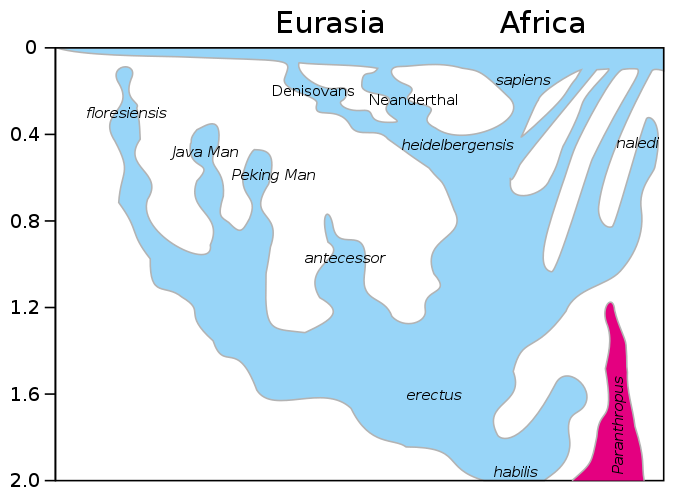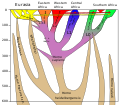Homo_lineage_2017update.svg

Size of this PNG preview of this SVG file:
675 × 498 pixels
.
Other resolutions:
320 × 236 pixels
|
640 × 472 pixels
|
1,024 × 755 pixels
|
1,280 × 944 pixels
|
2,560 × 1,889 pixels
.
Summary
| Description Homo lineage 2017update.svg |
English:
phylogeny of the
Homo
genus, based on Stringer, C. (2012). "What makes a modern human". Nature 485 (7396): 33–35. doi:10.1038/485033a, with modifications.
The following features are based on Stringer (2012).
Modifications based on other publications:
|
| Date | |
| Source | updated version of File:Homo-Stammbaum, Version Stringer-en.svg |
| Author | User:Conquistador , User:Dbachmann |
| Other versions |
|
Licensing
This file is licensed under the
Creative Commons
Attribution-Share Alike 4.0 International
license.
-
You are free:
- to share – to copy, distribute and transmit the work
- to remix – to adapt the work
-
Under the following conditions:
- attribution – You must give appropriate credit, provide a link to the license, and indicate if changes were made. You may do so in any reasonable manner, but not in any way that suggests the licensor endorses you or your use.
- share alike – If you remix, transform, or build upon the material, you must distribute your contributions under the same or compatible license as the original.
Captions
Add a one-line explanation of what this file represents





